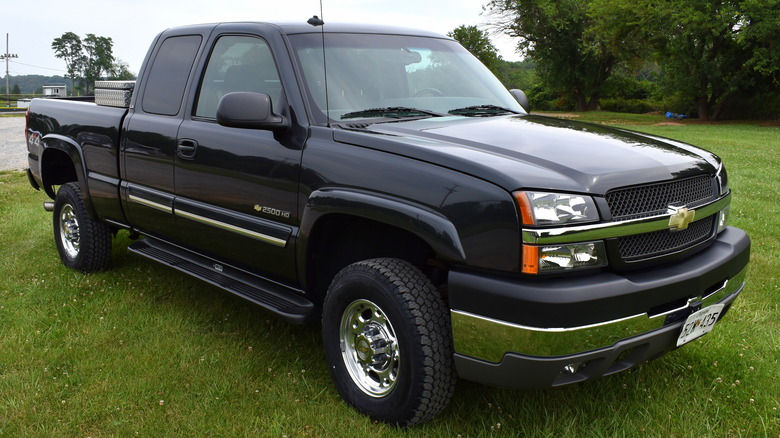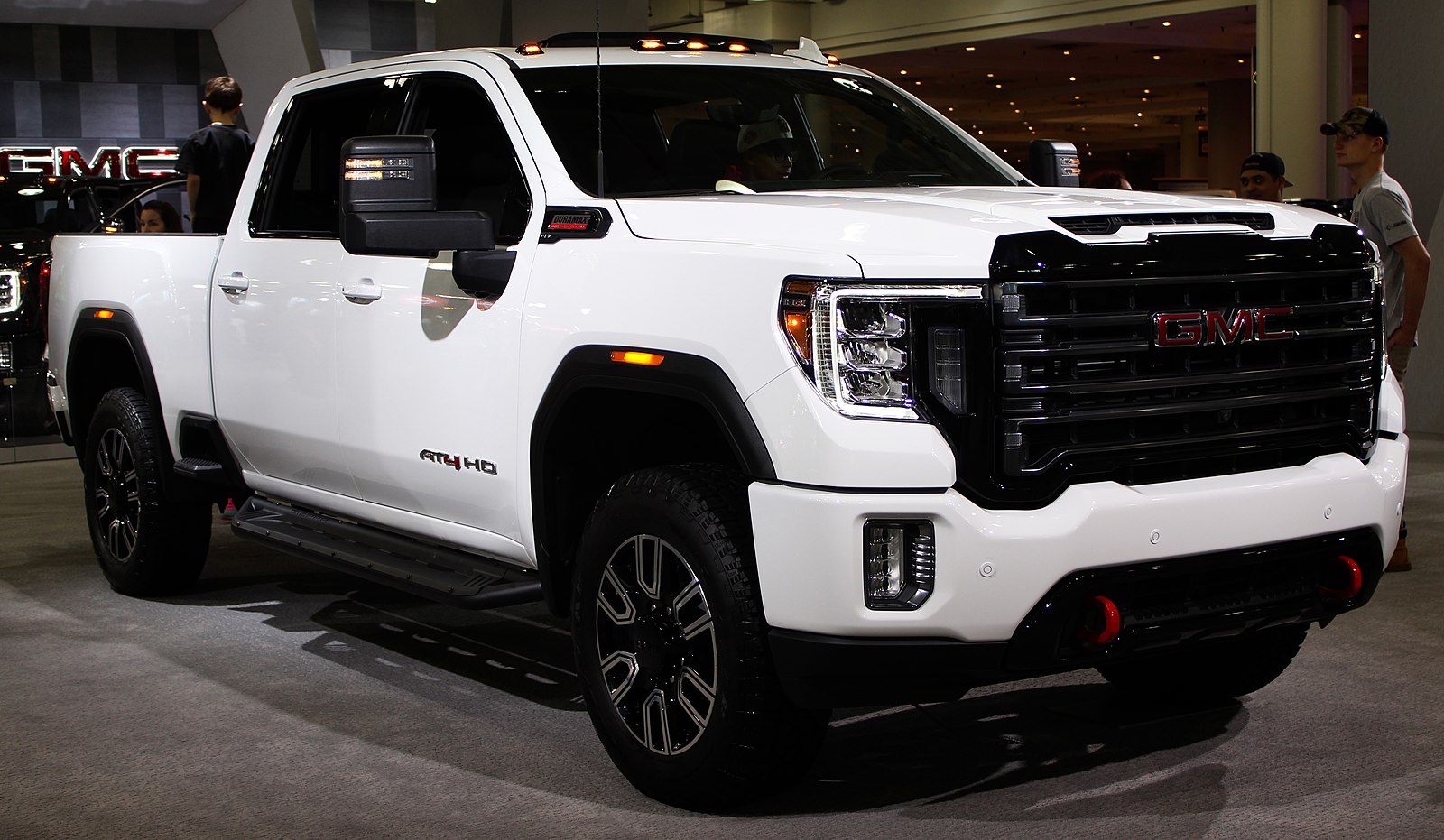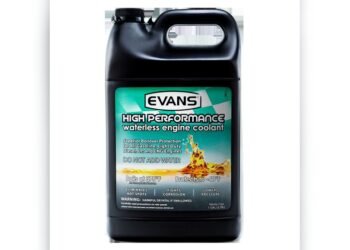When it comes to powerful diesel engines, the Duramax is a name that stands out. If you’re considering buying a truck with a Duramax engine, you probably want one that’s reliable, efficient, and built to last.
But here’s the thing: not all Duramax years are created equal. Some models have hidden pitfalls that could cost you big in repairs and headaches. That’s why it’s so important to know which Duramax years you should avoid before making a decision.
Imagine sinking your hard-earned money into a truck, only to face endless problems down the road. You don’t want that, right? We’ll walk you through the Duramax years to steer clear of, so you can make a smart, confident choice. Stick around—you’ll thank yourself later!

Credit: www.slashgear.com
Common Issues With Duramax Engines
Duramax engines are known for their power and reliability, but not every model year delivers the same experience. Some years stand out for recurring problems that can cost you time and money. If you’re considering a Duramax, understanding the common issues can save you from headaches down the road.
Recurring Mechanical Problems
Certain Duramax years are plagued by mechanical problems that keep showing up. One common issue is the failure of the injector system in early models like the LB7 (2001-2004). Replacing faulty injectors can cost thousands, and it’s a repair you might face multiple times.
Another frequent issue is the head gasket failure in models like the LLY (2004.5-2006). If not addressed quickly, this can lead to overheating and more severe engine damage. Pay attention to signs like coolant loss or white smoke from the exhaust—it’s better to catch this early.
Transmission problems are also common in some years. The Allison 1000 transmission, while generally robust, has had torque converter issues in certain models. If you notice slipping gears or delayed shifts, it’s time to investigate.
Impact On Performance And Longevity
Mechanical problems don’t just drain your wallet; they also impact the performance and lifespan of your Duramax. A faulty injector system can reduce fuel efficiency and cause rough idling. You’ll likely notice a drop in overall power, especially under load.
Head gasket issues can compromise engine cooling, leading to overheating. This significantly shortens the engine’s lifespan if not fixed promptly. You might find yourself replacing parts more often than you’d like—or even considering a full engine rebuild.
Transmission troubles can make towing and hauling a nightmare. Sluggish acceleration and gear slipping not only frustrate you but also reduce the truck’s capability to handle heavy tasks. Is that what you really want from a heavy-duty vehicle?
Being aware of these issues can help you make smarter decisions when buying or maintaining a Duramax. Which issue seems like a dealbreaker to you? Understanding these challenges can help you weigh the pros and cons before committing.
Models With Notable Reliability Concerns
Duramax engines are known for their power and durability. Yet, not all model years live up to this reputation. Some years faced reliability issues, impacting performance and long-term ownership costs. Identifying these models helps potential buyers make informed decisions.
This section highlights Duramax models with reliability concerns. It focuses on early challenges and specific years to approach cautiously.
Early Generation Challenges
Early Duramax engines faced design and manufacturing challenges. The LB7 engine, produced between 2001 and 2004, experienced injector failure. Replacing injectors was expensive and time-consuming for many owners.
Cooling system issues were also common in early models. Overheating problems reduced engine life and performance. These issues were addressed in later generations, but early models remained a concern.
Specific Years To Be Cautious About
2001 to 2004 models with LB7 engines are notable for injector problems. These failures led to costly repairs, frustrating many owners.
2004.5 to 2005 models with LLY engines had overheating concerns. Poor cooling design affected towing and high-load situations.
2011 models introduced emissions systems that caused performance drops. Some owners faced clogged diesel particulate filters and reduced fuel efficiency.
While these years had challenges, improvements followed in later models. Knowing these issues helps avoid potential headaches in used Duramax purchases.
Duramax Lb7: Pros And Cons
The Duramax LB7 is a popular diesel engine from 2001 to 2004. It offers solid performance, impressive fuel efficiency, and reliability. Despite its strengths, it has known weaknesses. Owners often face specific challenges that can impact long-term satisfaction. Understanding its pros and cons is essential before making a decision.
Injector Failures
The LB7 engine is notorious for injector failures. Early models commonly experienced leaking or failing injectors. These issues lead to white smoke, fuel dilution, or engine misfires. GM addressed this problem with an extended warranty for early LB7 models. Despite this, repairs can be costly without coverage. Replacing all eight injectors is often necessary, adding to expenses. Regular inspections can help detect injector problems early.
Maintenance Costs
Maintenance for the LB7 can be expensive compared to newer engines. Injector replacements are among the most significant costs. Other common repairs include head gasket issues and water pump failures. These repairs often require significant labor, increasing overall costs. Routine maintenance, such as oil and filter changes, remains essential. Neglecting maintenance can lead to more severe and expensive problems. Proper care can extend the engine’s lifespan and reduce unexpected costs.

Credit: prosourcediesel.com
Duramax Lly: Cooling System Problems
The Duramax LLY engine, produced between 2004.5 and 2006, is known for its strong performance. Yet, it has faced criticism due to cooling system issues. Many owners experienced overheating, especially during heavy towing or climbing steep grades. These problems can lead to costly repairs and reduced reliability over time. Understanding these issues can help buyers make informed decisions.
Overheating Risks
The Duramax LLY’s cooling system struggles to handle excessive heat. Its radiator design limits airflow, especially in high-demand situations. This often causes the engine to overheat under heavy loads. Drivers pulling trailers or climbing hills report frequent temperature spikes. Overheating can damage engine components, leading to expensive repairs.
Another issue is the smaller cooling fan compared to earlier models. This fan fails to cool the engine effectively during high-stress operations. Many owners had to upgrade their cooling systems to avoid overheating. Without these upgrades, the engine may face long-term reliability issues.
Turbocharger Limitations
The LLY’s turbocharger is another weak point tied to cooling problems. Excessive heat can reduce the turbocharger’s efficiency and lifespan. The turbo lacks proper cooling, causing it to overheat and wear out prematurely. High exhaust gas temperatures (EGT) contribute to this problem.
Turbo failure often leads to reduced engine power and expensive repairs. Drivers towing heavy loads are more likely to face these problems. Regular maintenance and upgraded cooling systems can help extend the turbo’s life. Still, these are added costs that many owners didn’t anticipate.
Duramax Lmm: Emissions System Issues
The Duramax LMM engine was introduced in 2007 and remained in production until 2010. While it delivered reliable performance, the emissions system caused frequent challenges for owners. These issues often impacted the engine’s efficiency and durability. Many drivers reported recurring problems, especially with components designed to meet stricter emissions standards.
Understanding these challenges can help you make informed decisions about Duramax engines. Below, we’ll highlight two major concerns with the LMM emissions system: Diesel Particulate Filter problems and fuel efficiency concerns.
Diesel Particulate Filter Problems
The Diesel Particulate Filter (DPF) was added to meet emissions regulations. Its primary function was to capture and burn off soot particles. While this technology reduced pollution, it often led to operational issues. Many owners experienced frequent DPF clogging, especially during city driving or short trips. This clogging triggered regeneration cycles that burned extra fuel.
In some cases, prolonged DPF issues caused reduced engine performance. Drivers also reported warning lights and increased maintenance costs. Replacing or cleaning the DPF became a common expense for many LMM owners. These recurring problems made the emissions system a frustrating aspect of owning this engine.
Fuel Efficiency Concerns
The emissions system in the LMM engine directly impacted fuel efficiency. Regeneration cycles required burning additional fuel to clean the DPF. This process often lowered overall miles per gallon. Many drivers noticed reduced fuel economy compared to earlier Duramax models.
The added weight of emissions components also contributed to lower efficiency. For owners using their trucks for towing or heavy-duty tasks, this became a noticeable drawback. While the engine itself was strong, the emissions system hindered its potential to deliver optimal fuel savings.
Signs Of Trouble In Problematic Models
Duramax diesel engines are known for their reliability and strength. However, not every model year performs equally, and some have shown recurring issues. Knowing the signs of trouble in problematic models can save you time, money, and a lot of frustration.
Warning Lights And Codes
One of the first indicators of trouble is the check engine light. If it comes on frequently, it’s a clear sign something is off. Don’t ignore it—use an OBD-II scanner to read the error codes and understand what’s wrong.
Common trouble codes in problematic Duramax years include P0087 (low fuel rail pressure) and P1093 (fuel volume regulator performance). These codes often point to fuel system issues. Left unchecked, they can lead to costly repairs.
Have you noticed other dashboard warnings, like reduced power mode? That’s a red flag too. It could mean issues with the turbocharger, EGR system, or even a failing transmission.
Unusual Noises And Performance Drops
Does your Duramax make knocking, whining, or ticking noises? These sounds often indicate trouble. For example, a knocking sound could mean injector failure, a common issue in early Duramax models.
Pay attention to how your truck drives. If you notice sluggish acceleration or power loss, it could be the turbocharger or fuel injectors. These problems are especially common in the LB7 and LLY Duramax years.
Don’t wait for the problem to worsen. Addressing these issues early can save you from a blown engine or other catastrophic failures.
Have you experienced any of these signs? If so, it’s time to take action. Regular maintenance and prompt repairs can keep your Duramax running smoothly, even in the more problematic years.
How To Avoid Duramax Pitfalls
Duramax diesel engines are known for their power and reliability, but not every year or model lives up to the hype. If you’re considering buying a Duramax truck, avoiding common issues can save you headaches and costly repairs. Let’s dive into practical ways to sidestep these pitfalls and make an informed decision.
Researching Vehicle History
Before buying a used Duramax, take time to research its history. Check for any accidents, modifications, or recurring issues. Websites like Carfax or AutoCheck can provide detailed reports on the truck’s past.
If possible, talk to the previous owner. Ask specific questions about repairs, oil changes, and how the truck was used—was it towing heavy loads regularly? Knowing the history helps you spot potential red flags before you commit.
Be cautious of trucks with extensive aftermarket modifications. While upgrades can enhance performance, poorly done mods may lead to reliability problems. A stock Duramax is often a safer bet.
Importance Of Regular Maintenance
Neglecting maintenance is one of the quickest ways to ruin a Duramax engine. Make sure you stick to the recommended service intervals, especially for oil changes, fuel filters, and coolant flushes. Diesel engines rely heavily on clean fluids to function properly.
Don’t assume the previous owner maintained the truck well. Before buying, ask for service records to verify that regular maintenance was performed. If records aren’t available, consider having the truck inspected by a diesel mechanic.
Small preventive steps can save you thousands of dollars. For instance, replacing the fuel filter every 10,000 to 15,000 miles can prevent clogged injectors, a common issue in older Duramax models.
What steps are you taking to ensure your next Duramax doesn’t turn into a money pit? Share your experiences or questions in the comments below!

Credit: www.copilotsearch.com
Alternatives To Problematic Duramax Years
Duramax engines are known for their power and reliability, but not every model year has lived up to this reputation. If you’re considering buying a used Duramax, you might be wondering: which years should you avoid, and what alternatives are worth your money? Knowing the best model years and how to optimize their performance can save you from headaches and costly repairs.
Recommended Model Years
Some Duramax years stand out for their durability and fewer reported issues. Models like the 2006-2007 LBZ are widely praised for their robust design and reliability. They are often referred to as the “sweet spot” in Duramax history because they have fewer emissions-related components that complicate maintenance.
If you’re looking for something newer, the LML models from 2011 to 2016 are also a solid choice. They offer updated technology and improved fuel efficiency while maintaining strong performance. Just remember to keep an eye on the injector system, which can wear out over time.
Would you prefer a budget-friendly option? The 2004.5-2005 LLY models are worth considering. While not perfect, they balance affordability with decent reliability, especially if previous owners have kept up with maintenance.
Upgrades And Modifications For Better Performance
If you’ve purchased a Duramax from a reliable year, you can still make tweaks to enhance its performance. Adding a cold air intake is a straightforward upgrade that improves airflow to the engine, boosting efficiency and horsepower. Many owners swear by this small change.
Another popular modification is upgrading the exhaust system. A high-performance exhaust reduces back pressure and helps the engine breathe better, which can extend its life and improve fuel economy. It’s a win-win for your wallet and your truck.
Don’t forget the value of tuning. Custom ECU tuning can unlock hidden potential in your engine, optimizing fuel delivery and power output. But make sure to use a reputable tuner to avoid damaging your Duramax.
What upgrades have you considered for your truck? Sometimes, even minor adjustments can make a big difference in how your vehicle performs day-to-day.
Frequently Asked Questions
What Are The Duramax Years To Avoid?
Certain Duramax models, like 2001-2004 LB7, had injector issues and high repair costs. Research reliability before buying.
Why Is The Lb7 Duramax Problematic?
LB7 engines often suffer from injector failures, causing expensive repairs. They lack a factory-installed injector warranty.
Are Early Duramax Engines Less Reliable?
Yes, early models like LB7 and LLY faced issues like overheating and injector problems. Later models improved reliability.
How Do I Spot A Problematic Duramax Year?
Look for known issues like overheating, injector failures, and transmission problems in specific year models before purchasing.
Should I Avoid Duramax Trucks With High Mileage?
Not always. High mileage trucks can still perform well if maintained properly. Check service history and condition.
Conclusion
Avoiding certain Duramax model years can save you from costly repairs. Research is key before purchasing to ensure reliability and performance. Focus on years known for their durability and fewer engine issues. Learning about common problems helps you make a smarter decision.
Always inspect the vehicle’s history for maintenance and repairs. A little effort now can prevent major headaches later. Choose wisely, and your Duramax can serve you for years to come.

















